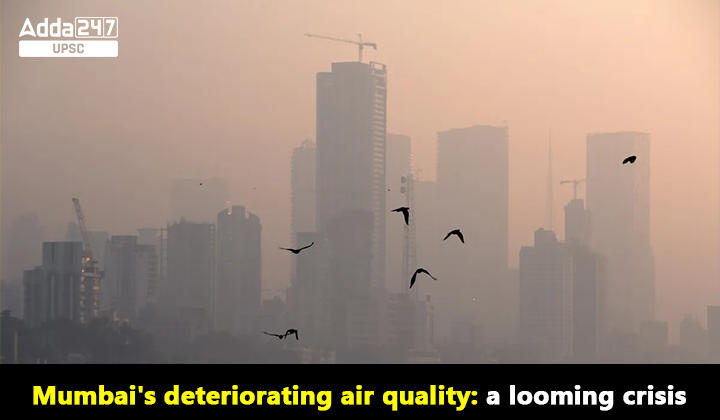Table of Contents
Mumbai, the bustling metropolis on India’s west coast, has long enjoyed the advantage of being shielded from severe air pollution by its coastal location and the refreshing sea breezes that sweep pollutants away. However, recent years have seen a concerning shift in the city’s air quality, causing alarm among residents and environmental experts. This article explores the factors contributing to Mumbai’s deteriorating air quality and the potential consequences.
The Demise of Mumbai’s Clean Air Legacy
For years, Mumbai was considered immune to the air quality concerns that plagued cities like Delhi. The city’s coastal setting meant that strong sea breezes acted as a natural cleanser, keeping the air relatively clean. However, the once-robust defense against pollution is weakening, leading to increased instances of poor air quality.
Meteorological Challenges
Mumbai’s air quality heavily depends on the direction and strength of its winds. Unlike Delhi, Mumbai’s pollution levels are not inherently lower; the emissions from vehicles, industries, and other sources are just as significant. What has traditionally saved Mumbai from toxic air is the alternating wind pattern moving from sea to land and vice versa, occurring every three to four days. When winds move toward the sea, they efficiently carry dust particles away.
Disruptions in Wind Patterns
The unprecedented spell of poor air quality witnessed last year was attributed to frequent and prolonged disruptions in this normal wind cycle. The winds, instead of alternating as usual, were shifting direction after an extended period. La Niña, the climate phenomenon that affected the Pacific Ocean, likely played a role in these disruptions.
La Niña’s Influence on Mumbai’s Air Quality
La Niña, characterized by cooler sea surface temperatures in the eastern Pacific Ocean, can have global weather impacts. Last year, the longest and strongest La Niña event on record potentially contributed to Mumbai’s air quality issues. Scientist Gufran Beig suggests that La Niña might have led to the disruptions in Mumbai’s wind patterns and calm wind conditions.
Recent Triggers
La Niña has ended, replaced by its counterpart, El Niño, which is not as potent. Last week, Mumbai experienced a dip in air quality for different reasons.
Local Weather Conditions
Calm winds following the monsoon withdrawal combined with a significant temperature gradient between Mumbai and the nearby Sahyadri ranges. This gradient caused winds from the hilly areas to bring dust from major construction projects in Navi Mumbai and its surroundings.
Long-Term Deterioration
The occasional meteorological challenges are not the sole cause of Mumbai’s air quality woes. The city’s pollution baseload is alarmingly high and continually increasing.
Urban Expansion and Economic Growth
A decade-long trend of economic growth, urban expansion, rising vehicle numbers, construction projects, and increased emissions have created a perfect storm of air quality issues. S.N. Tripathi, an expert on air pollution from IIT Kanpur, emphasizes that there has been no matching effort to mitigate these impacts.
Conclusion
Mumbai’s shift from being an air quality haven to experiencing more days of poor air quality is a clear warning sign. The city must acknowledge the urgency of the situation and take proactive measures to curb pollution and improve its environment. Failing to do so could have severe consequences for the health and well-being of its residents.



 TSPSC Group 1 Question Paper 2024, Downl...
TSPSC Group 1 Question Paper 2024, Downl...
 TSPSC Group 1 Answer key 2024 Out, Downl...
TSPSC Group 1 Answer key 2024 Out, Downl...
 UPSC Prelims 2024 Question Paper, Downlo...
UPSC Prelims 2024 Question Paper, Downlo...




